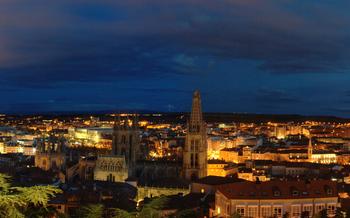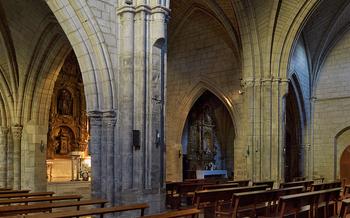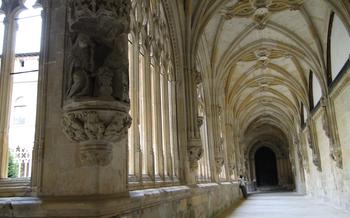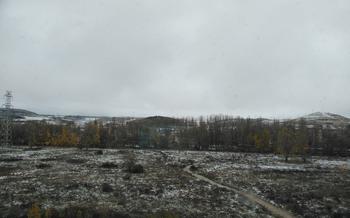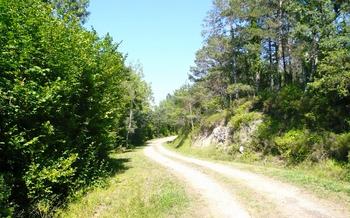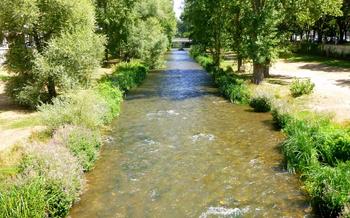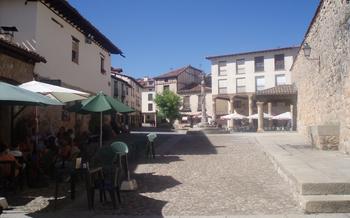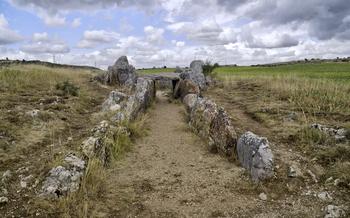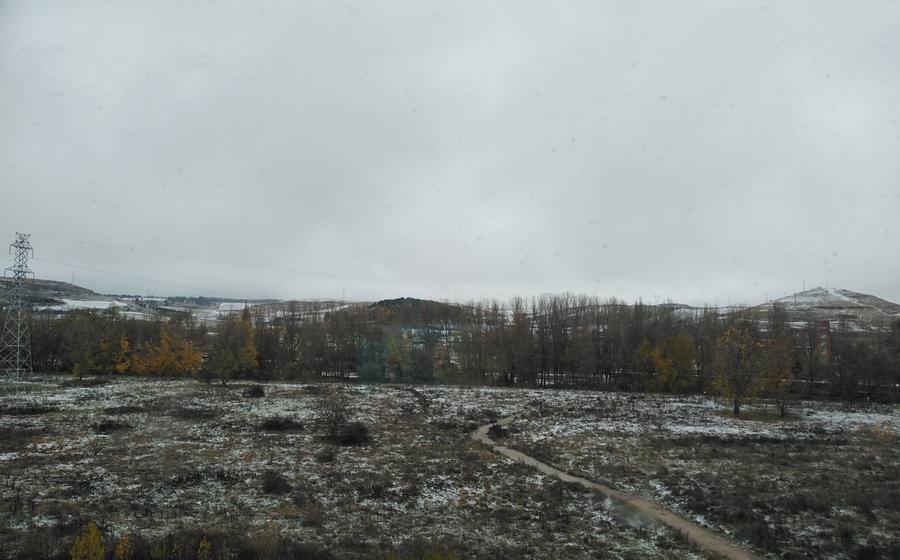
Parque Natural de las Lagunas Glaciares de Neila
- Parque Natural de las Lagunas Glaciares de Neila: A Pristine Wilderness
- Flora and Fauna:
- Hiking Trails
- Lagoons and Glaciers:
- Wildlife Watching
- Photography Opportunities:
- Camping and Accommodation
- Guided Tours
- Visitor Centers and Information
- Accessibility and Transportation
- Weather and Seasons
- Cultural Heritage
- Gastronomy
- Safety Precautions
- Insider Tip: Exploring the Hidden Gem of Laguna Negra
Parque Natural de las Lagunas Glaciares de Neila: A Pristine Wilderness
Nestled in the heart of Spain's Castile and León region, the Parque Natural de las Lagunas Glaciares de Neila is a breathtaking expanse of natural beauty, encompassing over 5000 hectares of pristine wilderness. The park's mesmerizing landscape is characterized by shimmering glacial lagoons, towering mountain peaks, and lush forests, creating a sanctuary for diverse wildlife and offering a haven for outdoor enthusiasts.
The park's stunning glacial lagoons, remnants of the last ice age, are a captivating sight, reflecting the surrounding mountains and forests in their crystal-clear waters. These lagoons, formed by the retreat of glaciers, are a testament to the park's rich geological history and provide a unique habitat for aquatic plants and animals.
The park's diverse terrain offers a range of activities for visitors to enjoy, from hiking and mountain biking to fishing and wildlife watching. The well-marked trails wind through forests of pine, beech, and oak trees, leading to breathtaking viewpoints and hidden waterfalls. Visitors can also embark on a scenic drive along the winding roads that traverse the park, taking in the panoramic vistas and spotting wildlife along the way.
Flora and Fauna:
The Parque Natural de las Lagunas Glaciares de Neila is home to a wide range of flora and fauna, showcasing the diverse ecosystems within the park. The park is renowned for its botanical significance, with over 1,200 species of plants recorded, including rare and endemic species. Visitors can admire the colorful displays of wildflowers, such as the vibrant yellow gorse and the delicate purple heather, which adorn the park's landscapes.
Among the diverse fauna, birdwatchers will delight in the opportunity to spot over 200 species of birds, including majestic birds of prey such as the golden eagle and the peregrine falcon. The park is also home to a variety of mammals, including elusive species like the Iberian wolf and the European otter, which can be spotted with patience and luck. Conservation efforts are actively undertaken to protect the park's biodiversity, ensuring the preservation of these unique species and their habitats. Educational programs and initiatives promote awareness of the importance of conservation and encourage visitors to play a role in protecting the park's natural heritage.
Hiking Trails
The Parque Natural de las Lagunas Glaciares de Neila offers a diverse network of hiking trails, ranging from easy paths suitable for families to challenging routes for experienced hikers. These trails meander through awe-inspiring landscapes, showcasing the park's diverse ecosystems and stunning vistas.
The easy trails, ideal for leisurely strolls, provide opportunities to witness the park's rich biodiversity and serene ambiance. Moderate trails offer a more immersive experience, leading to hidden waterfalls, secluded lagoons, and panoramic viewpoints. For those seeking an adrenaline rush, challenging trails traverse steep mountain slopes, rewarding hikers with breathtaking views and a sense of accomplishment.
Along the trails, hikers are treated to a tapestry of natural wonders. Towering peaks, verdant forests, and sparkling streams create a symphony of colors and textures. The air is perfumed with the sweet fragrance of wildflowers, and the gentle breeze carries the melodious songs of birds. The trails also offer glimpses of the park's rich fauna, including grazing deer, soaring eagles, and scurrying squirrels.
To ensure a safe and enjoyable hiking experience, it's essential to adhere to trail etiquette and safety precautions. Stay on designated trails to minimize your impact on the environment and respect wildlife. Be prepared for changing weather conditions by carrying appropriate clothing and gear. Inform someone about your hiking itinerary and estimated return time. And always carry a map and compass, as well as a fully charged mobile phone for emergencies.
Lagoons and Glaciers:
The Parque Natural de las Lagunas Glaciares de Neila is home to a stunning array of glacial lagoons, each boasting its unique charm and significance. These lagoons were formed thousands of years ago by the retreat of glaciers, leaving behind crystal-clear waters surrounded by breathtaking landscapes.
Among the most notable lagoons in the park is Laguna Grande, the largest and deepest lagoon, known for its mesmerizing turquoise waters and stunning reflections of the surrounding mountains. Laguna Negra, another must-see, is famous for its dark and mysterious waters, shrouded in legends and folklore.
The glaciers in the park, though diminished in size due to climate change, still play a crucial role in the park's ecosystem. They feed the lagoons with fresh water, provide habitat for specialized flora and fauna, and contribute to the park's unique microclimate. Visitors can witness the impressive remnants of these ancient ice formations, a reminder of the park's glacial past.
Unfortunately, climate change poses a significant threat to the glaciers and lagoons in the park. Rising temperatures and reduced snowfall have led to the retreat of the glaciers and a decrease in water levels in the lagoons. Conservation efforts are underway to mitigate these impacts and protect the park's fragile ecosystems.
Wildlife Watching
The Parque Natural de las Lagunas Glaciares de Neila is a haven for wildlife enthusiasts, boasting a diverse range of animal species that thrive in its unique ecosystem. Birdwatching enthusiasts will delight in the opportunity to spot a variety of avian species, including golden eagles, griffon vultures, and red-billed choughs. These majestic birds soar above the park's landscapes, providing breathtaking sightings for visitors.
Mammal watching also offers exciting possibilities, with elusive creatures like wolves, roe deer, and wild boars roaming the park's forests and meadows. While sightings of these animals may require patience and luck, the thrill of encountering them in their natural habitat is unparalleled.
To enhance your wildlife watching experience, consider visiting during the early morning or late evening hours when animals are most active. Remember to maintain a respectful distance from wildlife, avoid disturbing their habitats, and use binoculars or a camera with a telephoto lens for close-up observations. By following these guidelines, you can enjoy the wonders of the park's wildlife while ensuring their well-being.
Photography Opportunities:
The Parque Natural de las Lagunas Glaciares de Neila offers a rich tapestry of landscapes, wildlife, and natural beauty, making it a photographer's paradise. The park's diverse ecosystems, from towering peaks to pristine lakes, provide ample opportunities to capture stunning images.
Whether you're a seasoned photographer or an enthusiast looking to hone your skills, the park offers a range of photographic subjects and settings to suit your interests. Panoramic vistas of the glacial lagoons, framed by majestic mountain ranges, are a must-capture for any visitor. The park's abundant wildlife, including elusive birds and mammals, provides ample opportunities for wildlife photography enthusiasts.
To make the most of your photographic experience, plan your visit during the golden hours of sunrise and sunset, when the park's landscapes are bathed in a warm, ethereal light. Utilize a sturdy tripod to ensure sharp and steady shots, especially when capturing wildlife or landscapes with slow shutter speeds.
While pursuing your passion for photography, remember to tread lightly and respect the park's natural beauty. Avoid disturbing wildlife, stay on designated trails, and minimize your impact on the environment. By following these guidelines, you can capture stunning images while preserving the park's pristine wilderness for generations to come.
Camping and Accommodation
Within the boundaries of the Parque Natural de las Lagunas Glaciares de Neila, you can choose to camp or stay in a mountain refuge. There are designated campsites with basic amenities like restrooms, picnic tables, and fire pits, providing a rustic and immersive experience in the heart of nature.
Mountain refuges offer a more comfortable stay with facilities such as shared dormitories, dining areas, and sometimes even hot showers. These refuges are strategically located along popular hiking trails, catering to trekkers and adventurers who seek shelter and sustenance during their journey through the park.
Whether you opt for camping or staying in a refuge, choosing the right accommodation depends on your preferences and budget. If you prefer a more independent and self-sufficient experience, camping might be the ideal choice. However, if you prioritize comfort and convenience, a mountain refuge might be a better fit.
Remember to follow park regulations regarding camping and always leave no trace, respecting the pristine environment of the Parque Natural de las Lagunas Glaciares de Neila.
Guided Tours
Exploring the Parque Natural de las Lagunas Glaciares de Neila with a knowledgeable guide can greatly enhance your experience and safety. Guided tours led by experienced naturalists offer a wealth of benefits, including:
-
In-depth Insights: Guides possess a deep understanding of the park's ecology, history, and wildlife. They can provide fascinating insights into the park's unique features, helping you appreciate its natural wonders more fully.
-
Safety First: Navigating the park's rugged terrain and unpredictable weather can be challenging. Guides are trained to assess risks, choose safe routes, and handle emergencies, ensuring your safety throughout the tour.
-
Customized Itineraries: Guided tours can be tailored to your interests and abilities. Whether you're a seasoned hiker seeking adventure or a nature enthusiast looking for a leisurely stroll, guides can create a personalized itinerary that suits your needs.
-
Wildlife Spotting: Guides know the best spots to observe wildlife and can help you identify different species. With their expertise, you'll increase your chances of spotting elusive animals and capturing stunning wildlife photographs.
-
Photography Tips: If you're passionate about photography, a guided tour can provide valuable tips on capturing the park's beauty. Guides can suggest the best locations, lighting conditions, and techniques to help you create breathtaking images.
When choosing a tour operator, look for reputable companies with experienced guides who are passionate about the park. Read reviews from previous participants to gauge the quality of the tours and select the one that best aligns with your interests and expectations.
Visitor Centers and Information
The Parque Natural de las Lagunas Glaciares de Neila offers visitors two well-equipped visitor centers that serve as gateways to the park's wonders. The centers are strategically located at key access points to the park and are open during specific hours to provide essential information and services to visitors.
Inside the visitor centers, you'll find friendly and knowledgeable staff who are eager to assist you in planning your visit to the park. They can provide you with detailed maps, brochures, and exhibits that showcase the park's diverse ecosystems, wildlife, and hiking trails. The staff is also well-versed in the park's regulations and can provide valuable guidance on choosing the most suitable trails and activities based on your interests and abilities.
To make the most of your visit, it's highly recommended to stop by one of the visitor centers before embarking on your adventures in the park. Gather all the necessary information, ask questions, and seek advice from the experts who are dedicated to ensuring your experience in the Parque Natural de las Lagunas Glaciares de Neila is both enjoyable and safe.
Accessibility and Transportation
The Parque Natural de las Lagunas Glaciares de Neila is conveniently accessible by both public transportation and private vehicles. For those opting for public transport, buses run regularly from Burgos, the provincial capital, to the nearby towns of Salas de los Infantes and Neila. From these towns, taxis or local buses can be taken to the park entrance.
For those driving, the park can be reached via the N-234 and N-122 national roads. Ample parking is available within the park, with designated areas for cars, buses, and motorhomes. Visitors with disabilities or special needs can find accessible parking spaces near the visitor centers and along the main trails.
To ensure a smooth and enjoyable visit, it's advisable to plan your transportation in advance. Check bus schedules, consider carpooling or renting a vehicle if necessary, and make arrangements for parking, especially during peak season.
Weather and Seasons
The Parque Natural de las Lagunas Glaciares de Neila experiences a continental climate, characterized by cold winters and warm summers. Temperatures in the park can vary significantly depending on the altitude and time of year.
Summer (June to August):
- Average temperatures range from 15°C to 25°C, making it an ideal time for hiking, camping, and wildlife watching.
- The weather is generally dry and sunny, with occasional thunderstorms.
- The park's lagoons and glaciers are at their fullest during this time, offering stunning views and photo opportunities.
Autumn (September to November):
- Temperatures start to drop, ranging from 10°C to 18°C, making it a pleasant time for moderate hiking and outdoor activities.
- The park's vegetation transforms into vibrant autumn colors, creating a picturesque landscape.
- Wildlife viewing remains good, as animals prepare for the winter season.
Winter (December to February):
- Temperatures can drop below freezing, and snowfall is common, covering the park in a blanket of snow.
- Winter activities such as snowshoeing, cross-country skiing, and ice fishing become popular.
- Wildlife sightings may be limited due to hibernation and migration, but the park's winter wonderland offers a unique experience.
Spring (March to May):
- Temperatures gradually rise, ranging from 5°C to 15°C, marking the start of the hiking season.
- The park's flora and fauna come alive, with wildflowers blooming and birds returning to their nesting grounds.
- The melting snow reveals the park's stunning landscapes, making it a great time for photography and nature appreciation.
Essential Tips:
- Pack layers of clothing to adapt to changing weather conditions in the park.
- Always check the weather forecast before your visit and be prepared for rain or snow.
- Carry waterproof gear and sturdy footwear for hiking in wet or snowy conditions.
- Stay hydrated by bringing sufficient water or utilizing the natural water sources in the park.
- Be aware of the park's weather patterns and adjust your activities accordingly for a safe and enjoyable experience.
Cultural Heritage
The Parque Natural de las Lagunas Glaciares de Neila is steeped in rich historical and cultural significance. The region has been inhabited since prehistoric times, and there is evidence of human presence dating back to the Bronze Age. In the Middle Ages, the area was part of the Kingdom of Castile, and several castles and fortifications were built to defend against Moorish incursions. The park is also home to several Romanesque churches, which are testaments to the region's religious heritage.
Visitors to the park can immerse themselves in the local culture by visiting these historical sites and learning about the traditions and customs of the region. There are several opportunities to interact with local communities, such as attending festivals, visiting local markets, or trying out traditional dishes at local restaurants. It is important to remember to respect local customs and traditions while visiting the park, as this is a way of showing appreciation for the region's unique cultural heritage.
Gastronomy
A trip to Parque Natural de las Lagunas Glaciares de Neila is not complete without savoring the local gastronomy. The region boasts a rich culinary tradition that showcases fresh, seasonal ingredients and traditional recipes passed down through generations.
Must-Try Dishes:
-
Lechazo Asado: Tender roasted lamb, a specialty of the region, cooked in a wood-fired oven until it falls off the bone.
-
Morcilla de Burgos: A type of blood sausage made with pork blood, rice, and spices, a local delicacy often served grilled or fried.
-
Queso de Burgos: A mild, creamy cheese made from sheep's milk, perfect for pairing with local honey or membrillo (quince paste).
-
Olla Podrida: A hearty stew made with chickpeas, beans, meat, and vegetables, a traditional winter dish that showcases the region's agricultural bounty.
Local Markets:
-
Mercado de Abastos de Burgos: A bustling indoor market in the city of Burgos, offering a wide variety of fresh produce, meats, cheeses, and local specialties.
-
Mercado de Lerma: A smaller but charming market in the town of Lerma, known for its artisanal products, including handmade crafts and local honey.
Tips for Food Lovers:
-
Try the tapas: Many bars and restaurants in the region offer tapas, small plates of food, perfect for sampling a variety of local flavors.
-
Visit local wineries: The region is home to several wineries producing excellent wines, offering tours and tastings.
-
Support local businesses: By dining at local restaurants and shopping at local markets, you contribute to the preservation of traditional culinary practices and support the local economy.
Safety Precautions
The Parque Natural de las Lagunas Glaciares de Neila is a vast and untamed wilderness, and as such, visitors should take appropriate safety precautions to ensure a safe and enjoyable experience. Always stay on marked trails to avoid getting lost or disturbing fragile ecosystems. Be aware of your surroundings and be mindful of wildlife, as encounters with animals, though rare, can occur. Carry essential gear such as a map, compass, flashlight, and first-aid kit. It's advisable to hike in groups, as there is safety in numbers. Inform someone about your itinerary and expected return time in case of an emergency. Keep emergency contact information handy, and be prepared to dial 112, the European emergency number, if necessary. Following park regulations and guidelines is crucial for your safety and the preservation of the park's natural beauty.
Insider Tip: Exploring the Hidden Gem of Laguna Negra
Among the many wonders of the Parque Natural de las Lagunas Glaciares de Neila, there lies a hidden gem that often goes unnoticed by visitors: Laguna Negra. This secluded lagoon, nestled amidst towering peaks and lush forests, offers a breathtaking spectacle that will leave you spellbound. To reach this hidden treasure, follow the trail that winds through the serene landscapes, immersing you in the park's captivating beauty. As you approach Laguna Negra, be prepared to witness its mesmerizing waters, reflecting the surrounding peaks and forests in a perfect mirror image.
Take your time to soak in the tranquility of this secluded spot, far from the bustling crowds. Indulge in a picnic lunch on the shores of the lagoon, surrounded by the harmonious sounds of nature. Remember to tread lightly and respect the delicate ecosystem of this hidden gem. Leave no trace of your presence and allow future visitors to experience the same awe-inspiring beauty that you have encountered.
